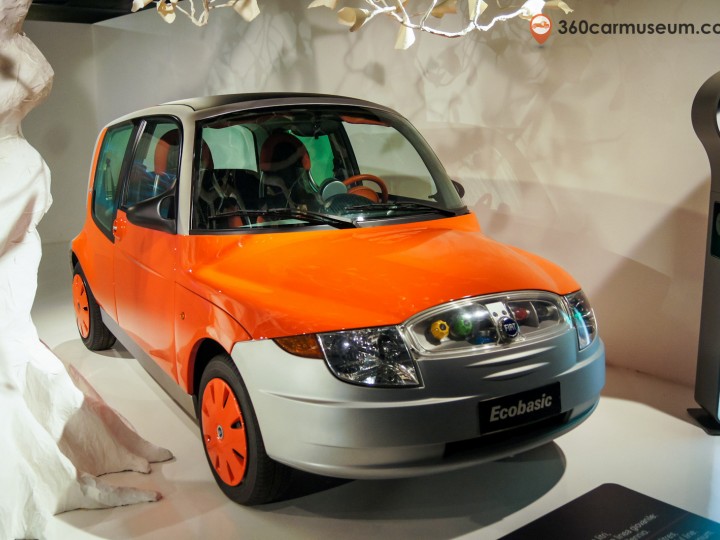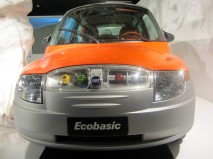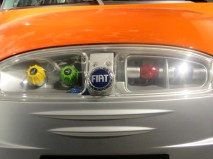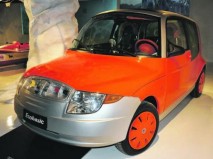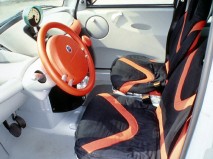2000 Fiat Ecobasic
The basic structure is steel, but in order to keep the weight down plastics are used for all the body panels, including anti-scratch polycarbonates for the rear windows. These plastics are recyclable, and also eliminate the need for painting the car (one of the worst pollutants in the car production process) since they are dyed during the plastics production process. Three doors are fitted as standard (plus a hatchback), the single rear door being on the side of the pavement. Four doors can be fitted if required.
The external design was principally driven by functionality, although an exceptional drag coefficient of 0.28 has also been achieved. The whole front end is a single plastic unit designed to absorb minor impacts, and features an openable flap behind which the owner can check his oil, water, brake fluid, etc, the bonnet being fixed shut.
Internally the theme has been to use the structure as part of the design and not to cover everything. Tubular structures, left exposed, are used for the dashboard and seats, the rear ones being foldable to increase the carrying capacity. The controls have been kept to a minimum with a 'Selespeed' type sequential gearbox fitted no clutch is required. The Air conditioning system is controlled by a single multi-function item, whilst the only instrumentation is a large, centrally mounted circular speedometer (incorporating a fuel guage).
Mechanically the Ecobasic uses a four cylinder 1.2-litre diesel engine with a 'Multijet' common-rail injection system. This produces 61bhp @ 3,500rpm and a torque of 160Nm. The fuel consumption is under 3l/100km whilst the car will accelerate to 100km/h in 13.3 seconds and go on to reach (an electronically limited) 160km/h. The transmission utilises a 'Selespeed' type sequential, clutchless shift and is programmed for two modes, normal and economy. Other fuel-saving measures include the engine switching off after the car has been stopped for four seconds and restarting when the accelerator is pressed and low rolling resistance tyres.


